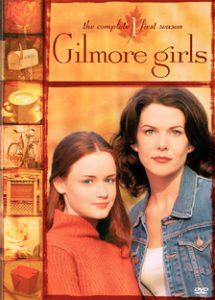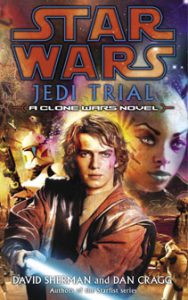“Jedi Trial” (2004) isn’t on anyone’s list of the great EU novels, and indeed, I did put off my re-read for a while, recalling it to be a slog. However, it was a pretty easy read this time. Written by one-time-only “Star Wars” scribes David Sherman and Dan Cragg, it lacks the smooth prose and deep saga knowledge of the great EU writers, but they also offer military details not found in any other book. Also, while the Praesitlyn battle that takes up this entire book is referenced in other works, this novel’s unique characters are not, making it a fascinating path not traveled.
Once you get past the young-adult style writing, “Jedi Trial” is a smooth read, but it can’t be described as a mislabeled YA book (like, for example, Kevin Anderson’s novels), because of the harshly realistic battle details. Sherman and Cragg describe how battlefields smell like body odor and feces, give details about inner organs being exposed on wounded clones, and note that some soldiers flat-out die of dehydration because it’s difficult to get the proper amount of water into the theater of battle. The authors also drive home the point about the horrors of “friendly fire,” which several characters note “happens all the time.” While other things are a bit unrealistic – I don’t quite understand how the engineers built high-tech underground command bunkers so fast – “Jedi Trial” has value for going deep into the nitty gritty of the Clone Wars.
Another fun element is the paths not traveled. The authors write Grudo, a Rodian soldier who shadows Anakin and becomes a close confidant, like someone who is pivotal in Anakin’s arc, yet he’s never mentioned in another book. Recon trooper Odie and pilot Erk are memorable for the fact that they almost immediately fall in love with each other, which while not realistic, actually is kind of cute; they don’t appear outside of this book, though.
I dig Zozridor Slayke’s backstory: He’s a Republic captain who is unhappy with the tentative nature of Palpatine’s push against the Separatists. So he defects, along with his Sons and Daughters of Freedom, and wins several crucial victories for the Republic’s cause. With Jedi Master Nejaa Halcyon we finally get someone who ties into other books; he’s Corran Horn’s ancestor, and he appears as a hologram in the “X-Wing” novels. In “Jedi Trial,” he serves as a good role model to Anakin of a Jedi who has a secret family, yet is still a loyal member of the Order. Oddly though, Anakin doesn’t think about Halcyon in other books.
“Jedi Trial” seems to have suffered from disconnect between the authors’ and the marketers’ vision. Asajj Ventress is on the cover art (although she looks more African than any other portrayal), but her only role in the narrative is to threaten to kill Separatist admiral Pors Tonith for no apparent reason. Ventress doesn’t appear after making this threat. If Tonith had expressed relief upon his capture by the Republic because at least he’d be safe from Ventress, that might’ve tied things together a bit, but he doesn’t. This entertainingly heartless and overconfident admiral was, at least, brought back for a novel set before this: “Darth Plagueis.”

While the fact that their characters were mostly ignored by other authors isn’t necessarily the fault of Sherman and Cragg, it should be noted that their writings on Clone Wars themes don’t smoothly fit the wider narrative. Anakin reflects that clones are people too; this is a lesson he never needed to learn in other stories. (One could argue that it kind of fits, now that “Jedi Trial” has been pushed toward the beginning of the Clone Wars – rather than the end — by the existence of the TV series, wherein Anakin is a Knight the whole time.)
But while the idea that Slayke’s people distrust clones adds some depth, Anakin’s thoughts on clones doesn’t jibe with his character, who – for all his faults – doesn’t tend to pre-judge people. Ironically, while other novels certainly humanize the clones (notably, the “Republic Commando” series), “Jedi Trial” fails to do so, as most of them go unnamed, except for Green Wizard, who gets one vignette where he is killed by friendly fire.
It struck me as odd that Anakin’s starfighter has a name – Azure Angel II. Although Wookieepedia has codified the names of his starfighters (the first Azure Angel was destroyed in the “Clone Wars” microseries), “Jedi Trial” is the only story I know of that plays up that name.
For readers looking for essential EU stories, “Jedi Trial” can be skipped. It’s not even essential as the story where Anakin is promoted from Padawan to Knight. In the epilogue, Yoda and Mace agree that they’ll promote him when he gets back, but we don’t see a formal ceremony. (And if memory serves, don’t we also see a knighting trial for Anakin in the microseries?) And other stories show Anakin’s heroism in battle without Obi-Wan’s assistance; the Jabiim arc in the “Republic” comics comes to mind.
Completists might enjoy “Jedi Trial,” though, both as a historical curiosity within the EU and for bringing harsh realism to the military depictions.

